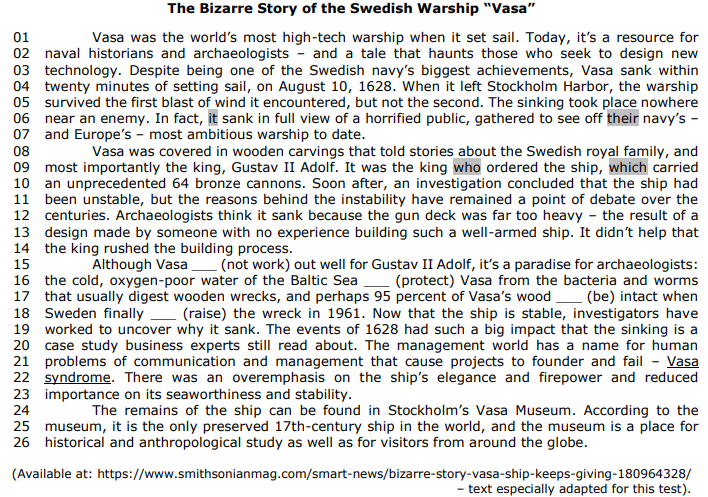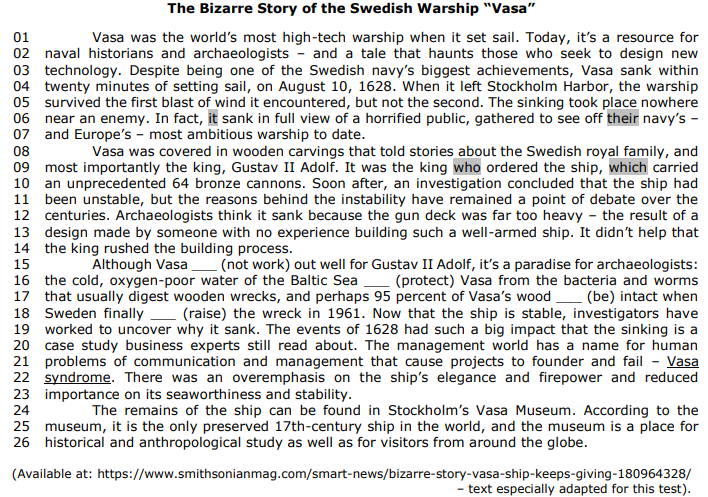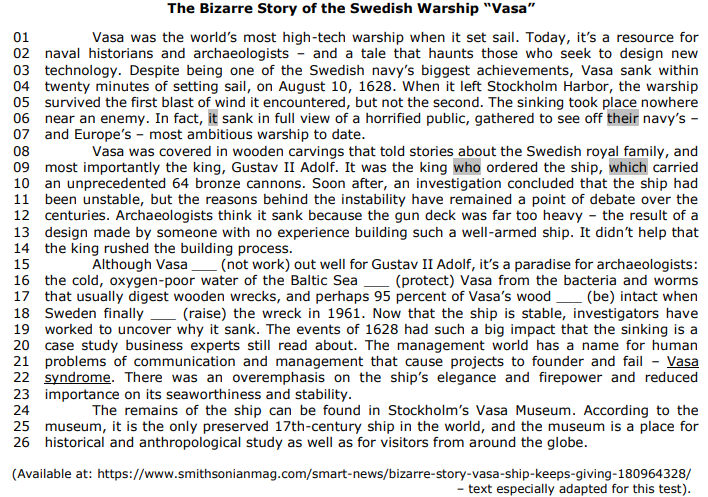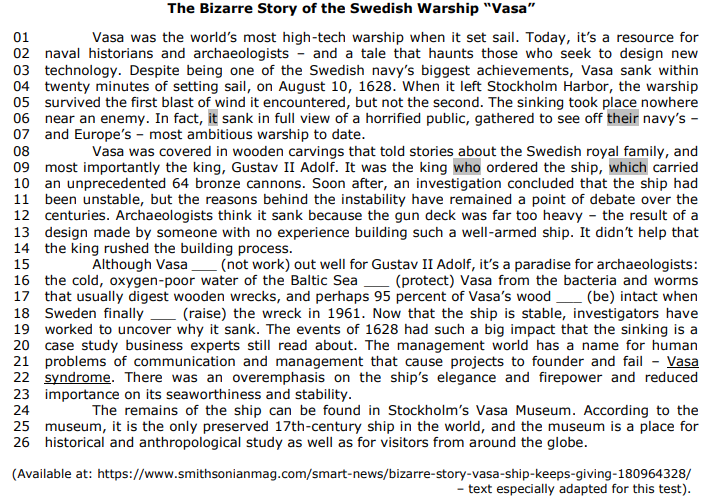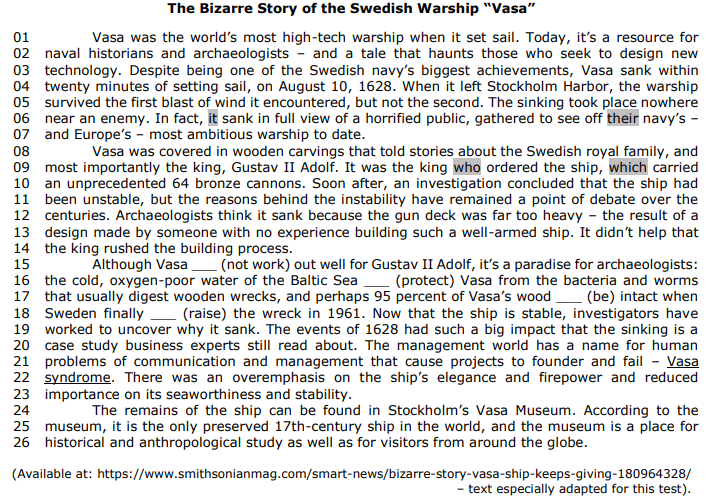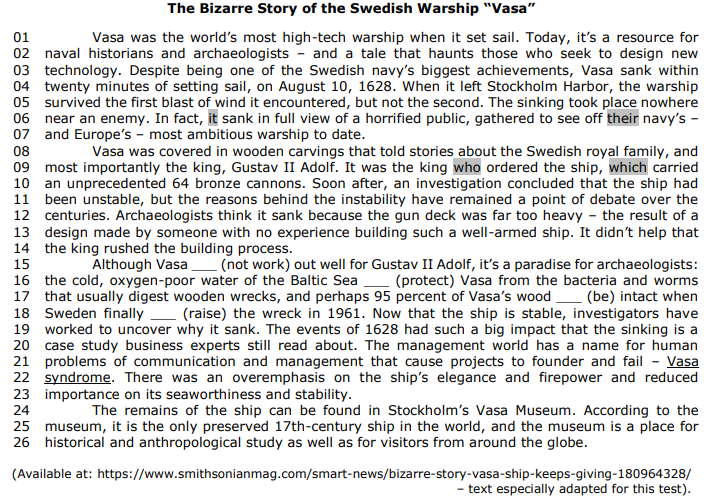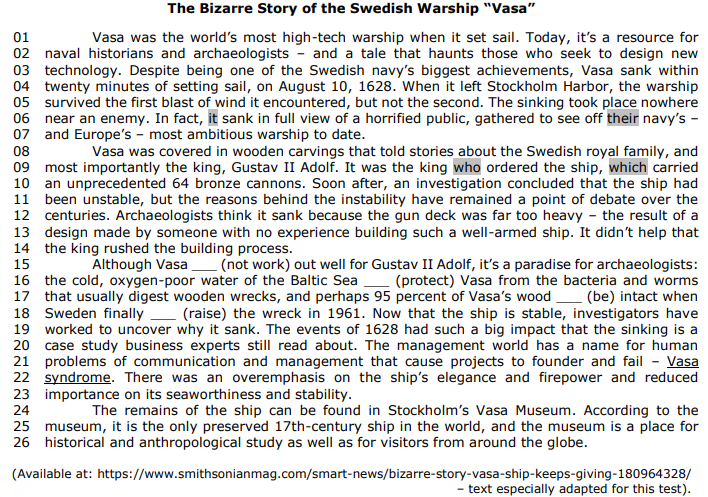Considering the context presented in the text, the sentence “The sinking took place nowhere near an enemy” (l. 05-06) suggests that the ship’s location in relation to an enemy was:
The underlined structure in the excerpt “the reasons behind the instability have remained a point of debate over the centuries” (l. 11-12) is in the present perfect tense. Considering this verb tense uses and the context in the article, we can say the action is/was:
Consider the following statements about the “Vasa syndrome” (l. 21-22):
I. It is a condition that makes it difficult for people to communicate well, what can cause trouble when business people need to explain their projects.
II. It is a reference to the warship Vasa, making it an example of a situation in which miscommunication can cause the failure of a project.
III. It is based on the idea that the people involved in designing and building the ship failed to balance their goals, creating a beautiful ship that could not serve its main purpose: sail.
Which statements are correct?
To rewrite the sentence “It is the only preserved 17th-century ship in the world” from the text in the interrogative simple present structure, the correct word order is:
Mark the alternative that best fills out the blanks in the text in order, using the simple past form of the verbs in the braces.
The highlighted words “it” (l. 06), “their” (l. 06), “who” (l. 09), and “which” (l. 09), in the order they are mentioned in the article, refer to:

